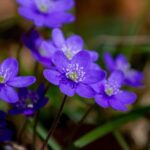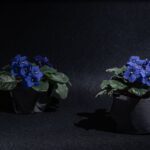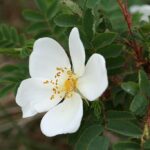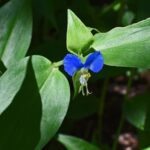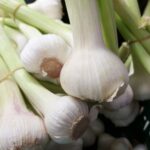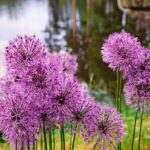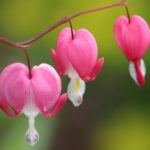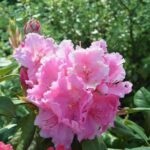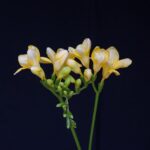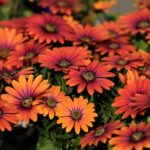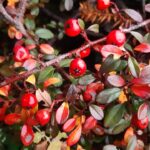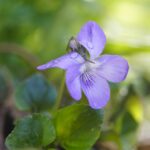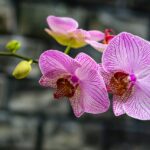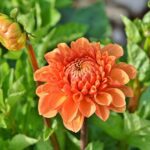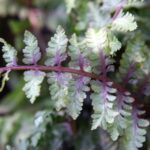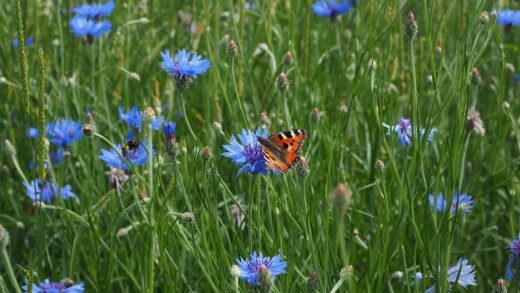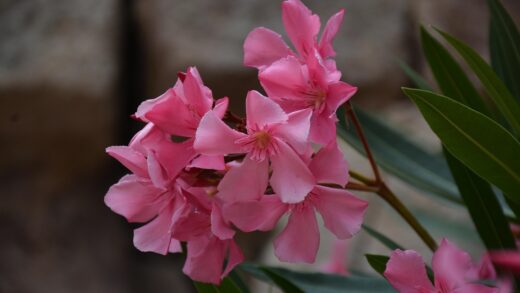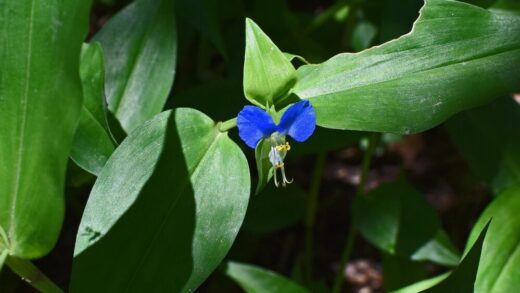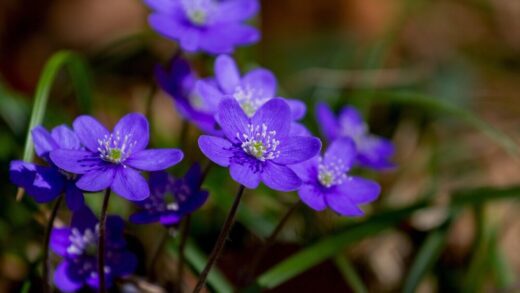The green apple aphid, scientifically known as Aphis pomi, is one of the most significant and common insect pests in apple cultivation, capable of causing serious economic damage in orchards. This small but highly destructive insect weakens trees by sucking the sap from leaves, leading to reduced shoot growth, leaf distortion, and a decline in fruit quality. Furthermore, the honeydew secreted by the pest promotes the growth of sooty mold, which further reduces the leaf’s assimilation surface and contaminates the fruit. Effective control is based on a thorough understanding of the pest’s biology and life cycle, which allows for the optimal timing of preventive and targeted interventions.
Combating the green apple aphid is a complex task that requires an integrated approach, incorporating preventive agrotechnical methods, biological control options, and chemical interventions as needed. For instance, excessive nitrogen supplementation encourages lush, soft-tissued shoot growth, creating ideal feeding and reproductive conditions for aphids, which is why balanced nutrient management is crucial. During pruning, attention must also be paid to removing infested shoot tips, thereby reducing the pest’s overwintering population. Increasing the biodiversity of the orchard environment, for example by planting flowering strips, can also contribute to the proliferation of natural enemies such as ladybugs and hoverflies.
Pest monitoring is essential for developing a control strategy. In the spring, after bud break, shoot tips and young leaves should be regularly checked to detect the appearance of the fundatrices (stem mothers) that cause the primary infection in a timely manner. Placing yellow sticky traps can help track the swarming of winged individuals, which indicates the risk of the pest spreading within the plantation. Determining the infestation threshold is crucial for economical and environmentally friendly plant protection, as chemical control should only be used when justified.
Therefore, effective control does not consist of a single intervention but a continuous series of well-planned activities adapted to local conditions. The goal of modern plant protection is not the complete eradication of the pest, but to keep its population at a level that no longer causes economic damage. This approach not only protects the environment but also makes apple cultivation more sustainable and economical in the long run, preserving the orchard’s ecological balance. In the following, we will detail the methods that can be used to successfully combat the green apple aphid.
The role of prevention and agrotechnology
The most cost-effective and environmentally friendly way to control the green apple aphid is through prevention, which is based on carefully planned agrotechnical procedures. The appropriate choice of variety and rootstock at the time of planting can lay the groundwork for future plant protection success, as some varieties are less susceptible to aphid damage. Balanced nutrient management based on soil test results is also critical; in particular, excessive nitrogen application should be avoided as it results in vigorous shoot growth and soft tissue structure, creating ideal conditions for rapid aphid proliferation. Optimal potassium supply, on the other hand, strengthens plant tissues, increasing their resistance.
Regular and professional pruning is one of the most effective preventive measures, which can significantly reduce the number of overwintering eggs and the extent of spring infection. During pruning, infested, distorted shoot tips and water sprouts, which are the pest’s preferred feeding sites, must be removed. Creating a well-ventilated, open crown structure not only facilitates better penetration of spray liquids but also creates a less favorable microclimate for aphids, while simultaneously supporting the work of natural enemies such as ladybugs and lacewings. It is important to remove and destroy pruning debris from the area to prevent the eggs from hatching.
Keeping the orchard weed-free also contributes to the success of control, as some weeds can be alternative host plants for aphids or provide them with shelter. Proper management of the inter-rows, for example through mulching or mowing, is also an important element of integrated pest management. The tidiness of the areas surrounding the orchard also matters, as winged individuals can easily fly into the plantation from neglected, weedy areas, creating new infection hotspots. By consistently applying preventive agrotechnical procedures, we can create a stable and healthy agroecosystem that is less exposed to pest gradations.
A dormant spray applied at the end of winter is a key element of the preventive strategy, aimed at reducing overwintering eggs. Oil-based products, such as paraffin oil, form a thin coating on the eggs, preventing their oxygen supply and thus destroying them. This intervention significantly reduces the rate of spring proliferation and gives natural enemies time to prepare for controlling the emerging aphid populations. The dormant spray should be applied before bud break under appropriate temperature conditions to ensure maximum effectiveness and avoid phytotoxicity.
Biological control options
Biological control is based on supporting and conserving populations of natural enemies, offering a long-term sustainable and environmentally friendly solution in the fight against the green apple aphid. Many predatory and parasitoid organisms live in apple orchards that can effectively regulate aphid numbers. Among the best known are ladybugs (Coccinellidae), whose larvae and adults consume large quantities of aphids. A single seven-spotted ladybug larva can destroy several hundred aphids during its development, making their presence extremely beneficial in the orchard.
In addition to ladybugs, the larvae of hoverflies (Syrphidae) are also among the most important natural enemies of aphids. Adult hoverflies feed on pollen and nectar, so planting flowering plants such as phacelia or buckwheat in the inter-rows or at the edges of the fields can effectively attract and keep them in place. The females lay their eggs near aphid colonies, and the hatching, legless larvae greedily consume the pests. Similarly useful are the larvae of lacewings (Chrysopidae), also known as “aphid lions,” referring to their extraordinary appetite and predatory nature.
Besides predators, parasitoid wasps (Aphidiinae) also play a significant role in regulating aphid populations. These tiny wasps lay their eggs inside the aphids’ bodies, and the hatching larva consumes the host from within. The parasitized aphid eventually turns into a swollen, mummified “mummy,” from which the adult parasitoid wasp later emerges, continuing the cycle. To protect these beneficial organisms, the use of broad-spectrum, persistent insecticides should be avoided, and selective products that spare natural enemies should be preferred.
The success of biological control depends on creating the right environment. This includes providing shelter and overwintering sites, for example by leaving brush piles, rock piles, or dry plant stems at the edge of the orchard. Increasing biodiversity, the presence of flowering plants, and minimizing chemical use together create the opportunity for stable populations of beneficial organisms to develop, which are capable of keeping pests below the economic threshold. Biological control does not produce immediate, spectacular results but is a long-term investment in the ecological balance and sustainability of the orchard.
Chemical control: timing and product selection
When preventive agrotechnical and biological methods are no longer sufficient to control the green apple aphid population and the damage reaches the economic threshold, chemical control may become necessary. The timing of the spray is critical for success; the goal is to carry out the intervention during the pest’s most sensitive developmental stage, before the colonies become too large and the curling of the leaves makes it difficult to achieve proper spray coverage. Foliar treatments in the spring, after bud break, are generally the most effective, when the fundatrices hatched from overwintering eggs begin to reproduce. Regular monitoring helps to determine the optimal time for spraying.
Choosing the right plant protection product is at least as important as correct timing. In accordance with the principles of Integrated Pest Management (IPM), preference should be given to selective products that spare natural enemies (ladybugs, lacewings, parasitoid wasps) over broad-spectrum, persistent insecticides. Active ingredients such as flonicamid, spirotetramat, or pirimicarb are considered selective and effective against aphids while posing a lower risk to beneficial organisms. Oil-based products, potassium soaps, or orange oil-based products can also be good alternatives, especially in organic farming or under lower infestation pressure.
To prevent the development of resistance, active ingredient rotation is essential. This means that during sprayings within one growing season or in consecutive years, insecticides with different modes of action should be alternated. If the same active ingredient is used continuously, resistant individuals can be selected within the aphid population, leading to a decrease in the product’s effectiveness, or even its complete loss. The mode of action classification (e.g., IRAC code) is always indicated on the plant protection product label, which helps in planning a conscious product rotation.
The quality of the spraying technique also determines the success of the control. Spraying should be done with a high volume of water and a fine droplet size to ensure that the spray liquid reaches the underside of the leaves and the inside of the curled leaves where the aphids hide. Windless, early morning or late evening hours are most suitable for spraying to minimize spray drift and evaporation loss, and to spare daytime active pollinating insects, especially bees. The use of precision technologies, such as targeted sprayers, can further increase efficiency and reduce the environmental load.
Integrated control strategies and future prospects
Integrated Pest Management (IPM) is a holistic approach that uses all available control methods in the fight against the green apple aphid collectively and complementarily to achieve economically acceptable, long-term sustainable, and environmentally sound pest management. This strategy does not aim for the complete eradication of the pest, but to keep its population below the economic injury level by utilizing natural regulatory processes. The basis of IPM is continuous monitoring, the application of damage thresholds, and informed decision-making that weighs the necessity, benefits, and potential risks of each intervention before it is carried out.
The practical implementation of an integrated strategy begins with preventive agrotechnical procedures, such as balanced nutrient supply, professional pruning, and weed control. This is followed by the maximum utilization of biological control options, which means improving the living conditions for natural enemies like ladybugs, hoverflies, and parasitoid wasps by planting flowering strips and providing shelters. Chemical control is only used when monitoring indicates that the level of infestation justifies it, and even then, the most selective, environmentally friendly, and beneficial-sparing products should be chosen, strictly adhering to the principle of active ingredient rotation.
Precision technologies and digitalization will play an increasingly important role in future control strategies. Reconnaissance with drones or sensors allows for the early and precise identification of infection hotspots, so interventions can be carried out in a targeted manner, limited only to the infested areas, significantly reducing the amount of plant protection product used. Decision Support Systems (DSS), which provide forecasts based on meteorological data, pest development models, and local observations, help farmers optimize control decisions and perfectly time sprayings.
Climate change poses new challenges to plant protection, as milder winters may favor the overwintering of the green apple aphid, and longer growing seasons may allow for the development of more generations, increasing pest pressure. Therefore, breeding resistant varieties and further developing biological control methods will become of paramount importance in the future. Research is increasingly directed towards the use of bio-pesticides, such as fungal and bacterial-based products, as well as plant extracts, which can offer new, environmentally friendly alternatives for integrated control programs, ensuring the sustainability of apple cultivation under changing environmental conditions.
📷 InfluentialPoints, CC BY 3.0, via Wikimedia Commons

